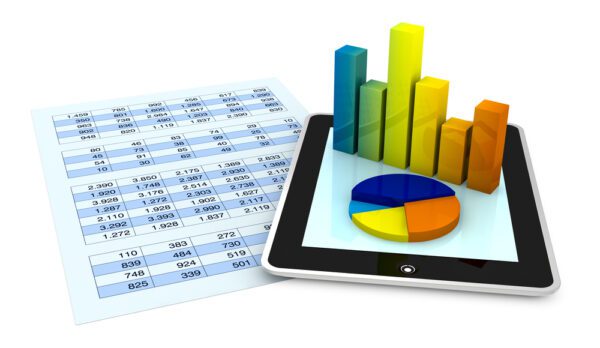
Budgeting is a critical management activity that ensures organizations have the resources needed to do business. Unlike other departments whose expenses are fairly predictable, the variability of maintenance needs make it difficult to determine how much to budget for maintenance – that is, without the right system in place. Computerized maintenance management system (CMMS) software not only tracks maintenance activities, but maintenance expenses as well.
How a CMMS Improves Maintenance Budgeting
Listed below are multiple ways in which a CMMS helps you improve maintenance budgeting.
Tracking Historical Corrective Maintenance (CM) Part Costs
The unplanned nature of asset failure makes corrective maintenance (CM) part costs difficult to predict from year to year. Tracking corrective maintenance in a CMMS provides you with a basis of historical data from which to estimate future part costs.
Maintenance organizations incur part costs whenever repair parts are not in stock and must be purchased, or when replenishing stocked parts. However, it is not necessarily appropriate to “add a little” to the previous year’s budget, as many organizations do. Critical failures with especially large part expenses should be evaluated on a case by case basis to determine the root cause of the failure, whether the failure can be prevented or mitigated, and the likelihood of recurrence.
Further reading: What is a Failure Code?
Analyzing corrective maintenance work order history in a CMMS provides context to why part costs were high or low in a given timeframe. If enough historical data is available, you may average multiple years-worth of data in order to come up with a baseline CM part cost estimate. Then, adjust the maintenance budget accordingly.
Forecasting Preventive Maintenance (PM) Costs
Costs related to preventive maintenance (PM) are easier to predict because they are planned. CMMS software stores cost data related to what tasks need to be done, what parts are required, and who will perform the work. Scheduling maintenance activities in a CMMS, whether based on runtime or date-based frequencies, helps organizations forecast the costs of future planned maintenance. Some CMMS solutions also track contracted preventive maintenance services like HVAC maintenance.
CMMS software can also be used to anticipate future preventive maintenance demands. For example, if your organization plans to purchase and install new assets, you can set up PM schedules ahead of time and factor their costs into the maintenance budget. Additionally, maintenance management reports can identify assets that are under or over maintained and adjust the preventive maintenance budget forecast accordingly.
Evaluating Staffing Levels
The number of employees needed to carry out high-quality maintenance depends on the workload. CMMS software provides insights into your maintenance history, including the amount of corrective maintenance vs. preventive maintenance, the amount of labor hours spent on maintenance, whether work is being completed on time, and the size of the work order backlog. You can then use this data to justify staffing levels.
Changes to the maintenance strategy may also prompt a need for additional staff. If your organization seeks to improve asset reliability, preventive maintenance work may need to increase, possibly requiring additional staff. Organizations getting started with failure analysis, such as Root Cause Analysis (RCA), need to dedicate resources to investigating asset failures.
Justifying Asset Replacement
Maintenance teams use many assets to execute maintenance work including vehicles, dedicated tools, or specialized equipment. At some point, these assets reach a point where they become too costly to repair. Tracking maintenance assets in a CMMS enables you to compare the cost of repair versus replacement.
Tracking the Maintenance Budget
CMMS software not only provides that data from which to build a maintenance budget, it also helps you track your performance against budget goals throughout the year. As you complete work orders, maintenance costs are automatically attributed to cost centers, ensuring that costs are attributed to the correct budget account.
Depending on the system, you can set budget goals by month, fiscal year, or other accounting period. Maintenance reports, dashboards, and data views help you visualize how closely you are meeting your budget goals and allow you to adjust accordingly.
Track Maintenance Expenses with FTMaintenance Select
FTMaintenance Select provides a single platform for tracking maintenance activities and costs, allowing you to make better decisions about your maintenance budget and resources. Request a demo today to learn more.